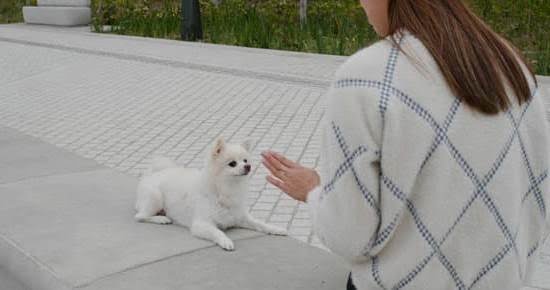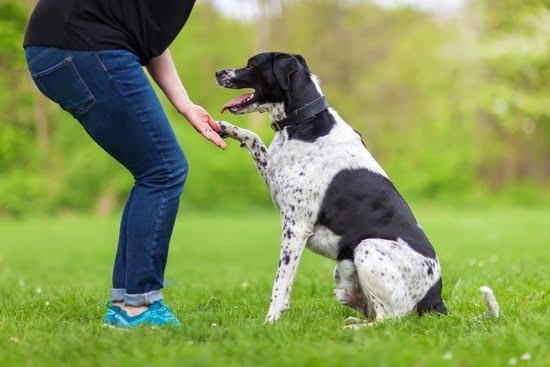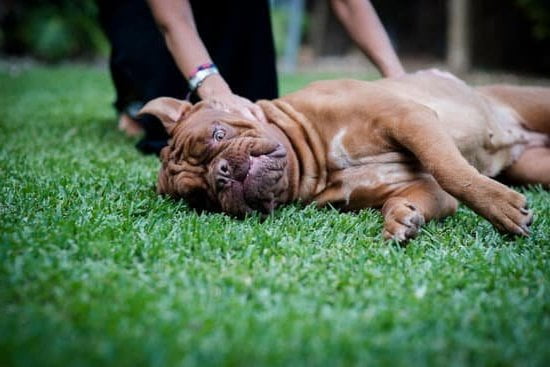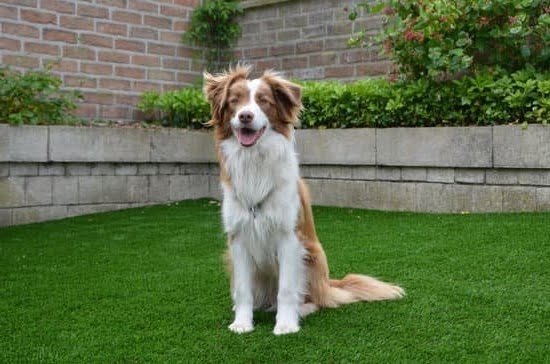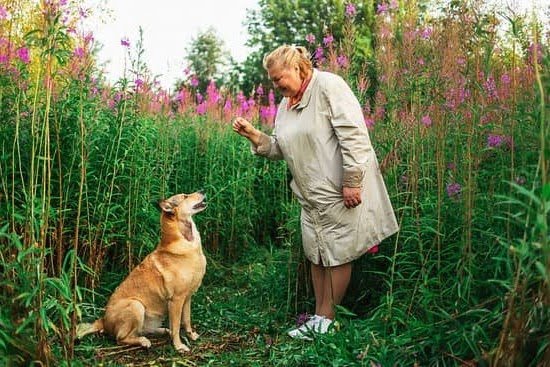Introduction
When to start training a bird dog is an essential question for any aspiring canine companion. The earlier you begin training your pup, the more solidified their behaviors and habits are likely to become over time. Dogs of all ages (and breeds) can learn the same commands, but young puppies will be the most impressionable and therefore the best suited to benefit from early on instruction. Training a bird dog should begin as soon as possible upon adoption – preferably within two days of bringing them home – and should initially focus on commands like sit, stay, come and heel. These foundational skills provide a framework for further development in regard to field-specific skills such as pointing and retrieving, as well as helping to create positive behavioral reinforcement that will remain consistent even without direct supervision. Consistent practice will ensure that your pup remains obedient and reliable in whatever endeavor they accompany you on; whether that’s a family outing to the beach or an afternoon hunt through the forest with friends. Providing them with ample exercise will also increase the effectiveness of their training by making sure that restlessness does not interfere with guided lessons. Training a bird dog is thus fundamental for any outdoor enthusiast who hopes for a well-behaved pup and quality companionship during these activities.
Choosing the Right Breed of Dog for Bird Dog Training
When it comes to training a bird dog, breed selection is key. Not all breeds of dogs are suitable for bird hunting; some have been bred specifically for that purpose over centuries and have the stamina and temperament to excel at it. It is important to choose a breed with an instinctual tendency towards retrieving game, as this will save time and energy during the training process. Some breeds that are suited to bird dog training include Labrador Retrievers, Vizslas, German Shorthaired Pointers, English Springer Spaniels, Golden Retrievers and Brittanys. Depending on the type of birds you wish to hunt with your pooch, such as upland or waterfowl birds, different breeds may offer more suitable traits that may be better suited for successful bird retrieval.
Once you’ve selected your ideal breed for bird hunting mastery, it’s then time to start training – but when? Well, it’s best to begin socializing your pup from puppyhood in order to cultivate a strong bond between the two of you, which should then make the actual ‘work’ of teaching commands much easier down the line. With puppies, you can also teach them basic canine good manners so that they understand expectations around behaviors such as toilet etiquette. The age at which formal training can begin depends on the individual dog – small puppies may tire quickly when engaged in extended periods of training sessions while bigger dogs may be able to handle longer sessions while still being attentive and willing learners. As always though when it comes dog obedience – start slow!
Preparing Your Home Environment for Bird Dog Training
Before you can begin training your bird dog, it is important to ensure that their home environment is suitable for their needs. This includes making sure the area where the dog will be trained is free of distractions, has ample room for them to move around, is properly ventilated and allows for plenty of shade or shelter from direct sunlight. It also means purchasing toys, treats and other rewards specifically geared towards positive reinforcement training as well as providing a safe toy box or outlet for the dog’s natural impulses such as digging into or chasing after objects. Additionally, setting boundaries and expectations and establishing reinforcements for behaviors that you want to encourage are crucial factors in preparing your home environment for bird dog training. Providing this type of behavior-oriented training should not only help with basic commands, but also set your pet up to become an obedient and well-behaved bird dog down the road.
The Right Age to Start Bird Dog Training
The ideal age to begin training a bird dog is between 8-12 months old. During this time frame, puppies reach physical and mental maturity and are able to absorb commands better. If you start teaching a young pup before 8 months old, it’s likely that they won’t retain much or understand the instructions correctly. On the other hand, if you wait too long, your pup may become uninterested in learning proper commands. To ensure success in the bird dog training, start when the puppy reaches between 8-12 months of age. This is typically when their basic behavior is established and they have become comfortable with their environment. It is important to remember that each breed will mature differently so contact an experienced trainer for guidance on when to begin if you are unsure about your pup’s development level.
Benefits of Early Bird Dog Training
Starting to train your bird dog early is a great way to establish healthy habits that will last a lifetime. Begin teaching simple commands such as sit and stay when he or she is just a puppy. As the pup grows, expand the training program by introducing more complicated commands such as retrieve and here. Not only does this give your furry friend valuable skills for life, but also helps stimulate their minds and builds obedience.
Early bird dog training also helps in socialization with other animals and people, allowing them to be comfortable around individuals outside of their family circle. Positive reinforcement is the best form of training for puppies – use small treats and verbal praise for desired behaviors. Taking time for regular playtime will allow you to have fun with your pup while reinforcing positive actions. Training during these times can also help increase problem solving skills by teaching the puppy how to understand basic cues.
Overall, bird dog training should begin relatively early so that pups can develop good habits that will stay with them into adulthood. Training should be done regularly and should focus on reinforcing positive behaviors while providing consistent rules and boundaries so that they know what’s expected of them. With patience, commitment, and consistency, your pup will become a dependable member of your household in no time!
Essential Supplies and Training Tools
When it comes to training a bird dog, the best time to start is when your dog is still a puppy, ideally between 8 and 16 weeks old. During this period of development, puppies learn quickly and have more energy to expend in the form of training sessions. When selecting supplies and tools for bird dog training, it’s important to think about what is necessary for the specific training goals you have. Training birds (used as live game) require special supplies such as a starter pistol, thrower arm, and bird launcher. For basic obedience and recall commands, you will need an adjustable collar that relies on providing corrections via vibrations or shocks. Long leads for allowing retrieves that occur at long distances away from you are also useful. A variety of treats for reinforcement should also be on hand as some dogs react well to food rewards better than other forms of praise or reward. Optional items can include scented gloves or dummies with detachable scents closest to natural wildlife smells or whistles to give commands from close or farther distances. When considering the variety of tools available for training your bird dog, look for quality gear designed for hunting purposes specifically created by trusted brands in the industry.
Starting the Training Process
The training process for a bird dog should begin as soon as you get them home. At the very least, you should begin by introducing basic commands, such as sit and stay, so your pup can quickly learn the basics of obedience. As they become older and more advanced in their training, you can focus on teaching more complicated skills like retrieving birds or pointing out potential prey. Whichever route you choose to take, it’s important to maintain consistency with your approach and make sure that each session is motivating and enjoyable for your pup. To ensure success with their training, it’s important to establish consistent timing for each exercise and use positive reinforcement techniques like praise and treats to reinforce good behavior when necessary. Along the way, be sure to reward any progress with plenty of fun playtime or socialization activities. With the right amount of patience and dedication, you’ll have a well-trained bird dog in no time at all!
Setting Up a Training Schedule
Creating a training schedule for your bird dog is an important part of the process. Start by understanding what types of activities your bird dog enjoys most, whether it be physical exercise (such as swimming and running), mental stimulation (like obedience tasks or scent work), or a combination of both. Developing a regular routine for each activity will help ensure your dog has the opportunity to practice new skills on a regular basis in an exciting and stimulating environment. Depending on your bird-dog’s age and level of experience with formal training, start off gradually. This can involve daily sessions that include several short periods devoted to either physical or mental exercises. As the bird-dog progresses, move toward longer and more frequent practice sessions until they have mastered their skill set. Consistency is key when forming a successful training regimen; stick to the same schedule each day so that your bird-dog knows what to expect from you. Finally, reward them appropriately when completing tasks successfully, providing verbal praise or treats as reinforcement to help build strong associations between behavior and reward. With dedication and determination, you’ll soon see marked improvement in your bird dog’s behavior!
Introducing Your Bird Dog to Other Dogs
When it comes to bird dogs, it’s important to start training as soon as possible. Training a bird dog is typically a lengthy process, and it’s best to start during the puppy phase of your pup’s life. As you begin the training process, it’s also important to introduce your bird dog to other socialized dogs. Doing this helps your canine learn more appropriate behaviors from other canines, in addition to providing your pup with much-needed socialization. When introducing your bird dog to new dogs, always use a slow introduction and be sure all involved animals are calm and not overly excited, so that no one feels threatened or overwhelmed by the situation. During these introductions, be sure to offer praise for good behavior. This can help create positive associations for all parties involved.
Hand Signals and Commands
Training a bird dog should start as soon as you bring your pup home, with simple commands like “sit” and “stay”. As your puppy grows, teach additional commands such as “heel”, “come” and “No”. Once basic obedience has been achieved, use hand signals to show the dog what behaviours are required. For example, when it is time to hunt, give a hand signal that tells the dog to stay still during the flush. When the bird lifts off, have a hand signal that means “go get it” and keep repeating this sequence until the flushing and retrieving become natural for your pup. Teach the dog how to mark a fallen bird in the field by having them retrieving from long distances, following these marks both visually and through their nose. Using verbal commands or even whistles can also help to strengthen each sequence since language can eventually become distracting throughout all of the excitement that hunting provides.
How to Stay Motivated and Consistent
When it comes to training a bird dog, the best time to start is as soon as possible. Starting young allows you to work with the dog on basic obedience commands, such as sit and heel, teaching them the proper way to behaviors that they may need later while hunting. Additionally, starting early gives your bird dog time to learn proper recall and whistle commands.
It can be difficult to stay motivated and consistent when training a bird dog. To do this, break up training into short batches of around 10 minutes or less throughout the day. Also, reward your dog often so they will stay engaged and interested in what you’re teaching them. Lastly, keep things fun by varying up exercises; have your bird dog practice agility obstacle courses or retrieve something from a different location each day so they won’t anticipate what’s coming next! Finally, don’t forget to spend some quality time with your pup rewarding good behavior!
Wrapping Up
When training a bird dog, the best time to start is as early as possible. Puppies should begin their foundational obedience training as soon as they arrive in their new home. Establishing socialization and basic commands during the puppy stage will result in better chances for success and success rates with parents being more eager to learn and understand. Additionally, introducing birds to your dog after the initial obedience training has been completed helps establish good behaviors when hunting. Lastly, keep safety a priority and be aware of your surroundings while out in the field or any open area where your pup might encounter wildlife or hazards.
During this whole process, establish clear rules on when such behavior is acceptable and when it’s not. It’s important to reward desired behaviors consistently with treats, praise, or playtime while also correcting unwanted behaviour immediately so that you reinforce clear expectations of proper behavior. Starting early also gives your pup plenty of time to both practice techniques learned during training as well as adjust moods/attitudes towards hunting activities like flushing birds out. Involve yourself in your pup’s bird hunt experience by setting up rock solid cues for recall so that even out in the field you can have complete control over his behavior; setting up mentally stimulating exercises like blind retrieves or game drives was used traditionally by upland hunters years ago and still proves successful till today! Finally take some moments every day with your pup dedicated to having fun – this increases trust between owners and canine companions leading them to understand each other better overall which leads to keeping successful relationships for life!

Welcome to the blog! I am a professional dog trainer and have been working with dogs for many years. In this blog, I will be discussing various topics related to dog training, including tips, tricks, and advice. I hope you find this information helpful and informative. Thanks for reading!

